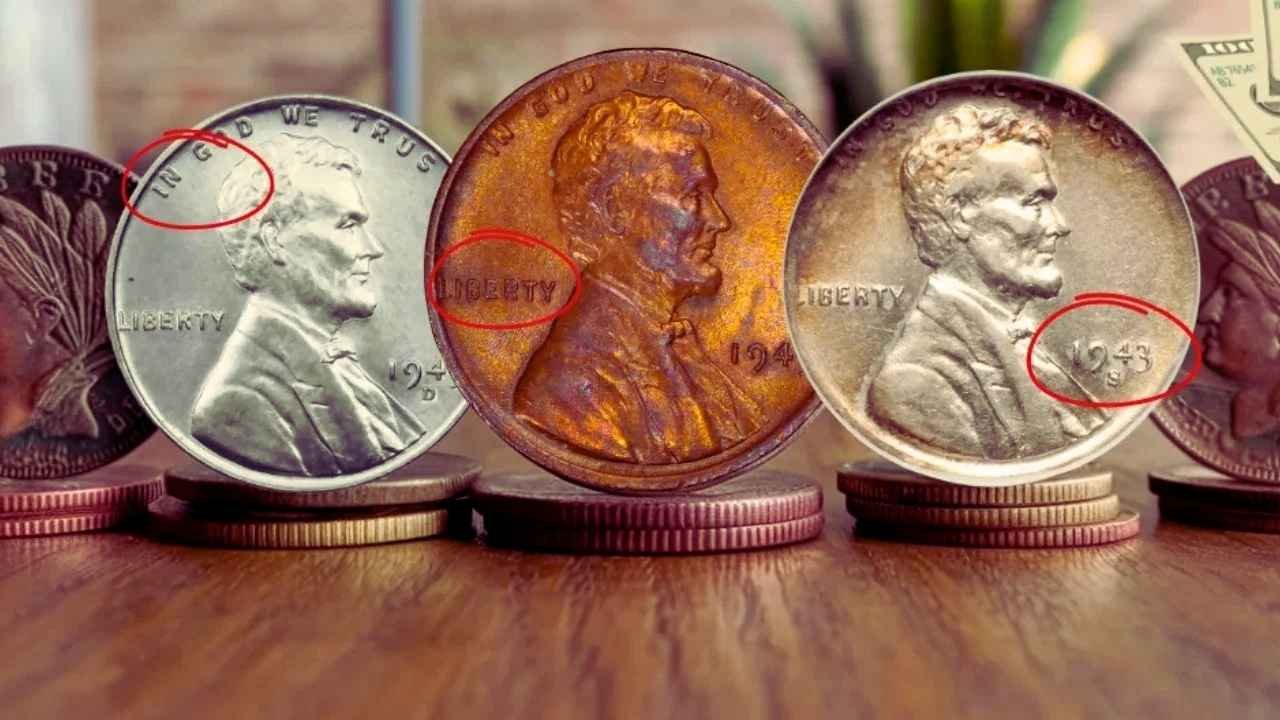Ever thought a penny in your change could be worth millions? Some rare wheat pennies, minted between 1909 and 1958, have sold for jaw-dropping prices at auctions. These coins, known for their wheat stalk design on the back, are collector’s treasures due to minting errors or low production numbers. Check your pockets or coin jars—you might have one of these six pennies that could change your life. Here’s a look at these valuable coins and how to spot them.
Pennies That Fetched Millions
Wheat pennies are special because of their history and rarity. Some have unique errors, like doubled designs or wrong metals, making them worth a fortune. Others were made in small batches, driving up their value. Below are six wheat pennies that have sold for millions or could if found in top condition.
- 1943-D Bronze Lincoln Penny: During World War II, pennies were made of steel to save copper, but one bronze penny was struck by mistake at the Denver Mint. Only one is known to exist, selling for $1.7 million in 2010. It could be worth $2.3 million today in mint condition.
- 1943-S Bronze Lincoln Penny: Another wartime error, a few bronze pennies were minted in San Francisco. One sold for $282,000 in 2016, but a top-grade one could fetch over $1 million.
- 1944-S Steel Wheat Penny: Most 1944 pennies were bronze, but two steel ones were made in San Francisco by accident. These are worth $408,000 to $1.1 million, depending on condition.
- 1909-S VDB Lincoln Penny: This penny, with designer Victor D. Brenner’s initials “VDB” on the back, had a low mintage of 484,000 in San Francisco. A top-grade one sold for $168,000 in 2022.
- 1955 Doubled Die Obverse: This penny has bold doubling on the date and lettering, visible without a magnifying glass. About 24,000 were made, and one sold for $114,000 in 2018.
- 1914-D Lincoln Penny: With just 1.2 million minted in Denver, this penny is super rare. A mint-condition one sold for $159,000 in 2018.
How to Spot These Valuable Coins
Finding these pennies takes a bit of know-how. Here’s what to check:
- Look at the date and mint mark: “D” is for Denver, “S” for San Francisco, and no mark means Philadelphia.
- Check the material: The 1943 bronze pennies are copper-colored, not silver like steel ones. The 1944-S steel penny is silver, not bronze.
- Spot errors: Look for doubling on the 1955 penny’s date or lettering. Use a magnifying glass for the 1909-S VDB’s initials.
- Test with a magnet: Bronze pennies don’t stick; steel ones do.
If you find a match, don’t clean it—cleaning lowers value. Take it to a coin dealer or grading service like PCGS or NGC for authentication.
| Coin Type | Key Feature | Estimated Value |
|---|---|---|
| 1943-D Bronze Penny | Bronze, 1943, “D” mark | $1.7M–$2.3M+ |
| 1943-S Bronze Penny | Bronze, 1943, “S” mark | $282,000–$1M+ |
| 1944-S Steel Penny | Steel, 1944, “S” mark | $408,000–$1.1M |
| 1909-S VDB Penny | “VDB” on back, “S” mark | $168,000+ |
| 1955 Doubled Die | Doubled date, lettering | $114,000+ |
| 1914-D Penny | 1914, “D” mark | $159,000+ |
Why These Pennies Are Worth So Much
These coins are valuable because they’re super rare or have unique mistakes. The 1943 and 1944 errors happened during World War II when the Mint switched metals, creating accidental treasures. The 1909-S VDB and 1914-D had low mintages, making them hard to find. The 1955 Doubled Die’s bold error makes it a collector’s dream. Each coin tells a story, tying it to history and boosting its value, even for worn ones.
Where to Find These Pennies
You could stumble across these pennies anywhere—your pocket change, a coin roll from the bank, or an old jar at home. Flea markets, estate sales, or family collections are also great spots. The 1943 bronze pennies, for example, have been found by everyday people sorting through change. Keep checking wherever coins turn up, and you might get lucky.
What to Do If You Find One
If you think you’ve got one of these pennies, handle it with care. Store it in a plastic coin holder to protect it. Don’t try to clean or scrub it, as that can ruin its value. Take it to a professional coin dealer or send it to a grading service to confirm it’s real—fakes are common, especially for high-value coins like the 1909-S VDB or 1943 bronze. If it’s authentic, you could be looking at a huge payout.
Start Your Coin Hunt Today
Next time you’re digging through change, take a closer look at those wheat pennies. A 1943-D Bronze or 1955 Doubled Die could be hiding in your wallet, worth enough to change your life. Grab a magnifying glass, check dates and mint marks, and start hunting. You might just find one of these six rare pennies that sold for millions!
